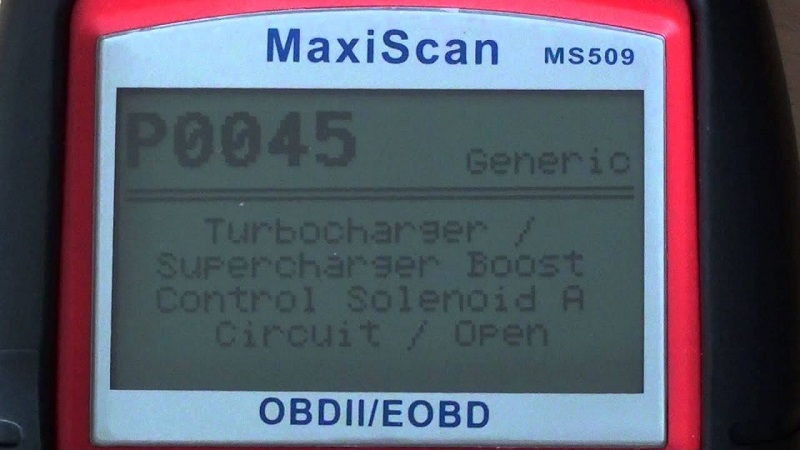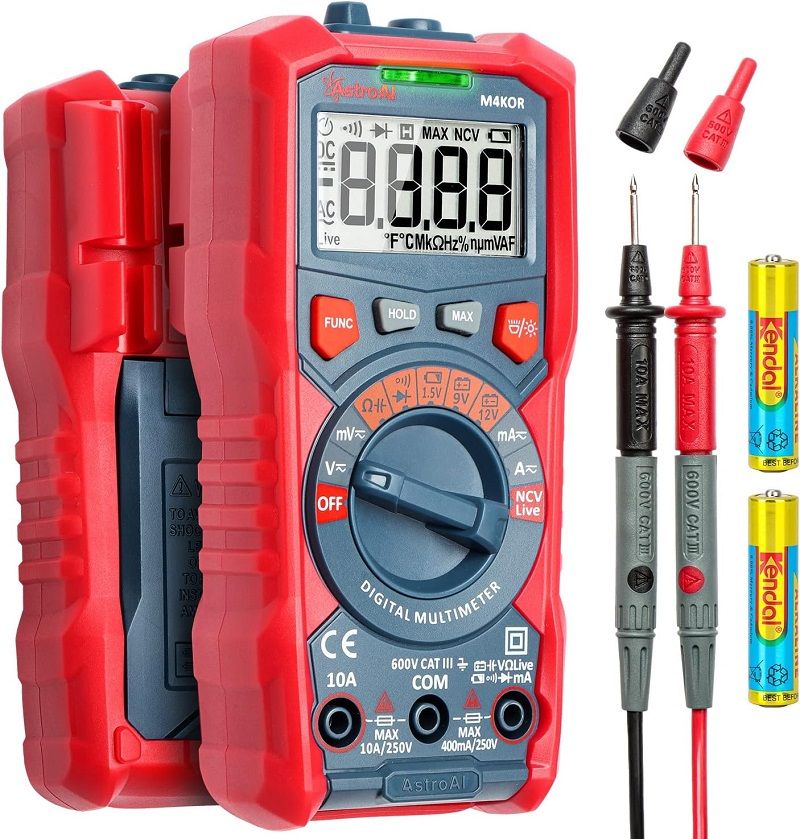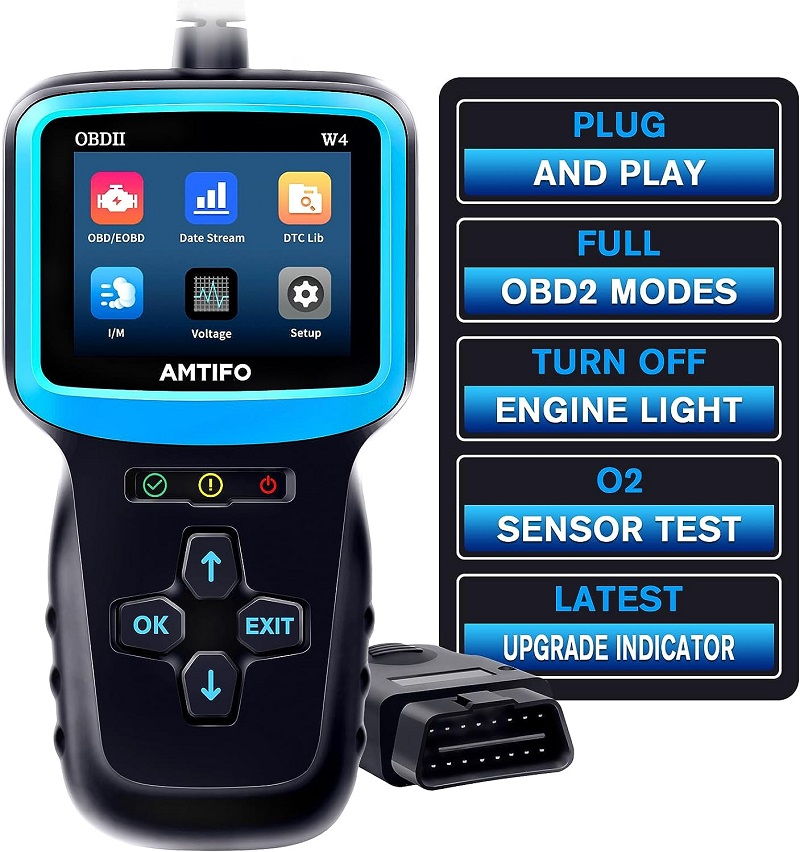This post contains affiliate links. This means I will make a commission at no extra cost to you should you click through and make a purchase [ “As an Amazon Associate, I earn from qualifying purchases.” ]. Read the full disclosure here.
Understanding P0045 Turbocharger/Supercharger Boost Control “A” Circuit/Open: Causes, Symptoms, and Solutions GuideMechanic.Com In the intricate network of modern automobile systems, the P0045 trouble code may sound like a cryptic message to many drivers.
However, for those familiar with automotive diagnostics, it signifies a specific issue related to turbocharger or supercharger boost control. In this article, we delve into the details of the P0045 trouble code, exploring its causes, symptoms, and potential solutions.
See Also: P0043 HO2S Heater Control Circuit Low (Bank 1 Sensor 3)
P0045 Turbocharger/Supercharger Boost Control “A” Circuit/Open
Understanding the P0045 Trouble Code:

P0045 is an OBD-II trouble code that indicates a malfunction in the turbocharger or supercharger boost control circuit, labeled as “A”.
In simpler terms, it points towards an open circuit or an electrical fault in the system responsible for regulating the boost pressure generated by the forced induction system.
Causes of P0045:
Several factors can trigger the P0045 trouble code, including:
Faulty Boost Control Solenoid:
The boost control solenoid is an integral component responsible for regulating the boost pressure. A malfunction in this solenoid, whether due to wear and tear or electrical issues, can lead to the P0045 code.
Wiring Issues:
Damaged or corroded wiring within the boost control circuit can disrupt the flow of electrical signals, leading to an open circuit condition and triggering the P0045 trouble code.
Boost Pressure Sensor Problems:
A faulty boost pressure sensor can provide inaccurate readings to the engine control module (ECM), causing it to incorrectly regulate the boost pressure and potentially triggering the P0045 code.
Vacuum Leaks:
Any leaks in the vacuum lines connected to the turbocharger or supercharger can disrupt the boost pressure regulation, leading to the activation of the P0045 trouble code.
P0045 Turbocharger/Supercharger Boost Control “A” Circuit/Open
Symptoms of P0045:

When the P0045 trouble code is detected by the vehicle’s onboard diagnostics system, drivers may experience several noticeable symptoms, including:
Reduced Engine Power:
One of the most common symptoms associated with P0045 is a noticeable decrease in engine power and performance. The engine may feel sluggish and unresponsive, especially during acceleration.
Illuminated Check Engine Light (CEL):
The illumination of the check engine light is often the first indication of a potential issue. Upon scanning the vehicle’s onboard diagnostics system, the P0045 trouble code will be retrieved.
Decreased Fuel Efficiency:
A malfunctioning turbocharger or supercharger boost control system can adversely affect fuel efficiency, causing the vehicle to consume more fuel than usual.
Engine Stalling:
In severe cases, particularly if the boost pressure regulation is significantly compromised, the engine may stall or hesitate during operation.
P0045 Turbocharger/Supercharger Boost Control “A” Circuit/Open
Diagnosing and Resolving P0045:

Diagnosing and resolving the P0045 trouble code typically involves the following steps:
Code Retrieval:
Using an OBD-II scanner, retrieve the trouble code(s) stored in the vehicle’s ECM. Confirm the presence of the P0045 code and any accompanying codes.
Visual Inspection:
Perform a visual inspection of the boost control solenoid, wiring harness, and vacuum lines for any signs of damage, wear, or corrosion. Address any issues discovered during the inspection.
Test Boost Control Solenoid:
Test the boost control solenoid using a multimeter to ensure proper functionality. If the solenoid is faulty, replace it with a new one.
Check Wiring Continuity:
Use a multimeter to check for continuity in the wiring harness connected to the boost control solenoid. Repair or replace any damaged or broken wires as necessary.
Test Boost Pressure Sensor:
Test the boost pressure sensor to ensure it is providing accurate readings to the ECM. Replace the sensor if it is faulty or providing inconsistent readings.
Verify Vacuum System Integrity:
Inspect the vacuum lines connected to the turbocharger or supercharger for any leaks or damage. Replace any compromised vacuum lines to restore proper functionality.
Clear Codes and Test Drive:
Once the necessary repairs have been completed, clear the trouble codes from the ECM using the OBD-II scanner. Take the vehicle for a test drive to ensure the issue has been resolved and the P0045 code does not reappear.
Conclusion:
See Also: P0044 HO2S Heater Control Circuit High (Bank 1 Sensor 3)
The P0045 trouble code can be a daunting prospect for vehicle owners, signaling potential issues within the turbocharger or supercharger boost control system.
However, by understanding the underlying causes, recognizing the associated symptoms, and following a systematic diagnostic approach, drivers can effectively diagnose and resolve the issue, restoring their vehicle’s performance and efficiency.
If uncertain or uncomfortable with DIY diagnostics and repairs, it’s always advisable to seek assistance from a qualified automotive technician.
- Trucks with Camper Shell for Sale - June 30, 2025
- Trucks for Hauling Heavy Loads - June 30, 2025
- Trucks with Large Bed for Sale - June 30, 2025
